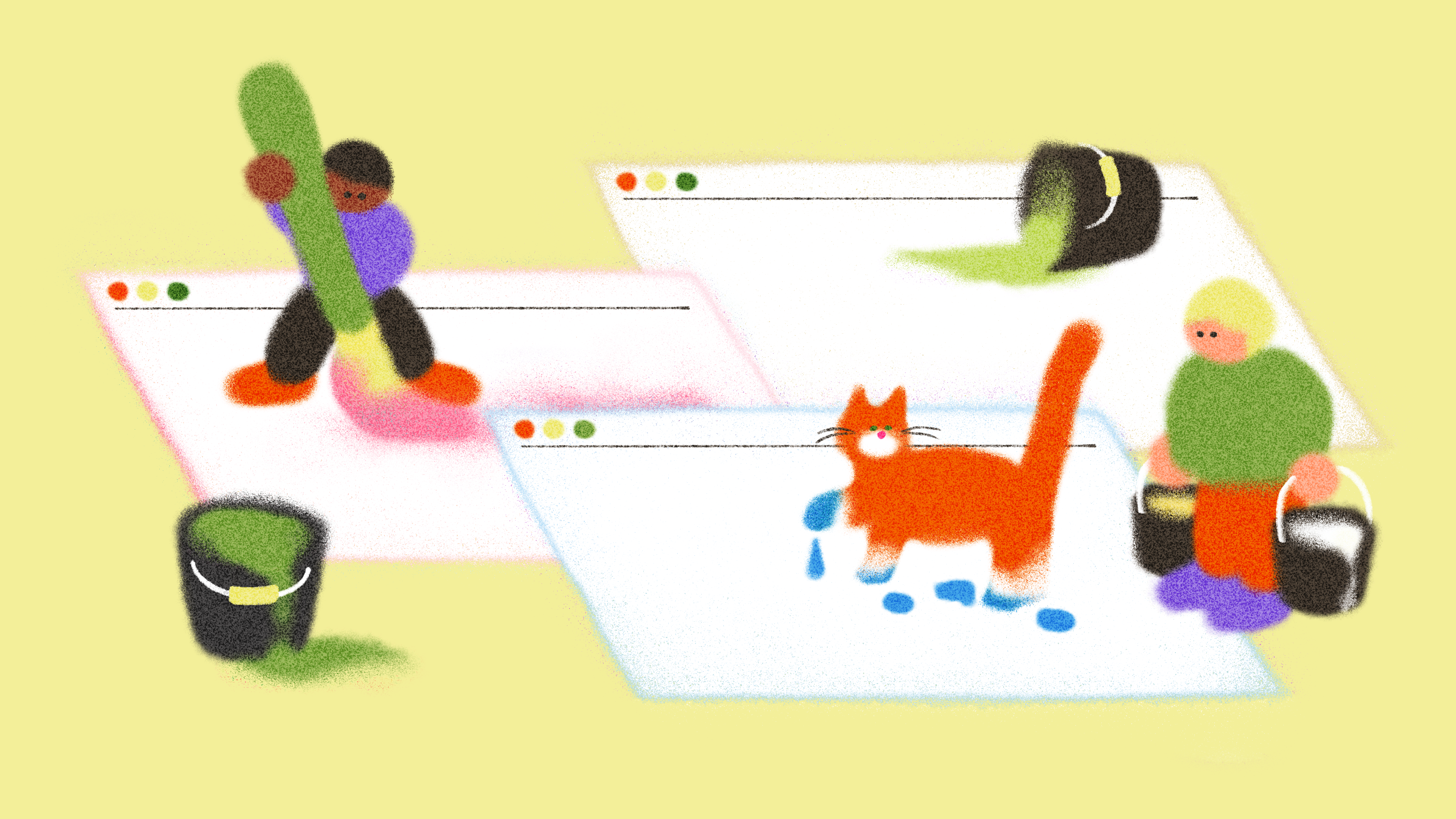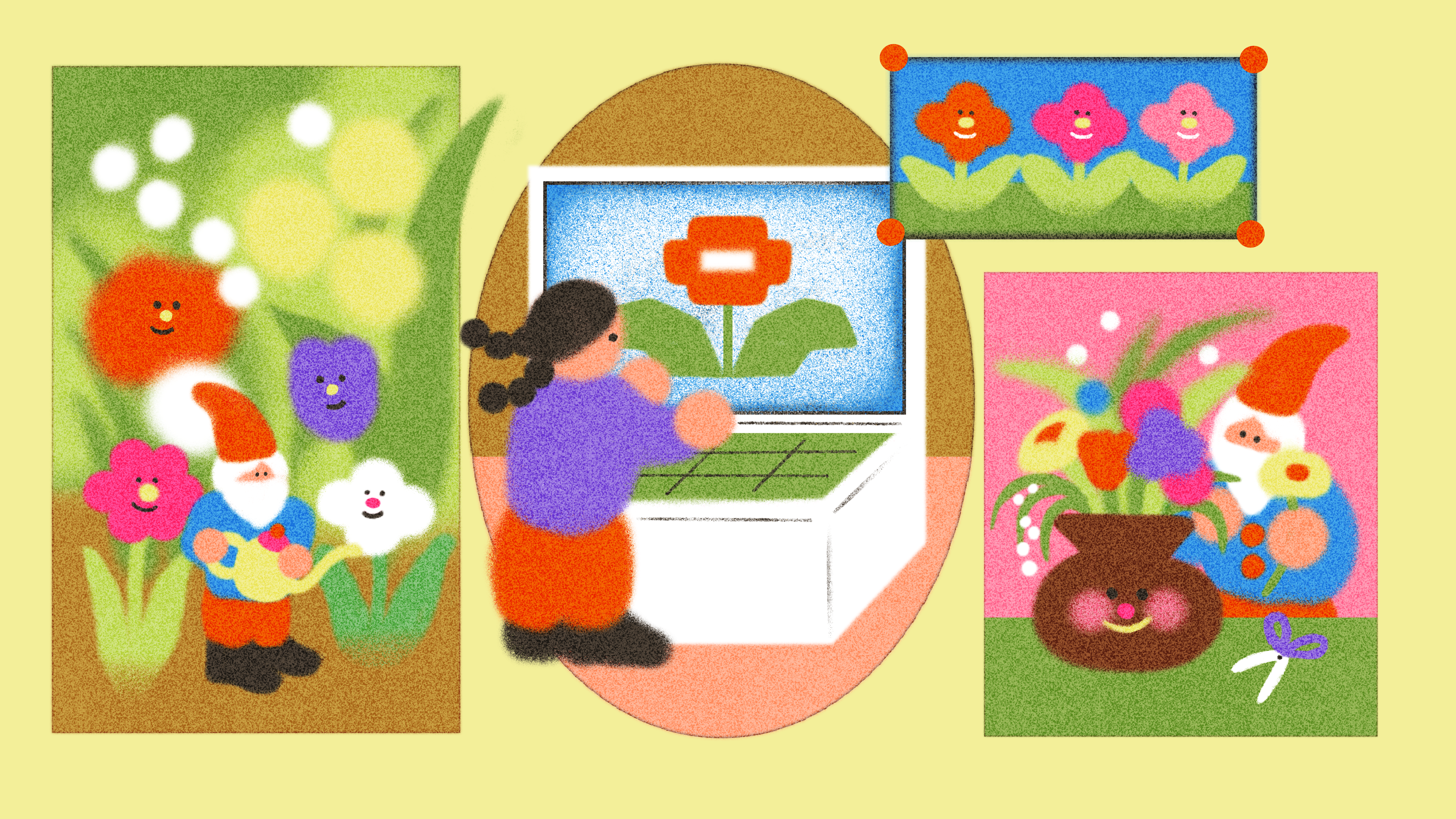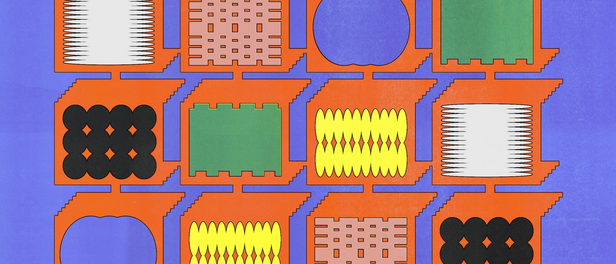There’s a lot of buzz about AI agents. Robots that do more with less supervision—what could go wrong? We asked our community how this might shake up how we think about UX.
Welcome to the first installment of Double Click, a new series where we ask our community to weigh in on topics in tech and design that have bubbled up to the top of our feeds.
It’s official: The latest tech to rouse Big Feelings is agentic AI. You’ve probably seen the headlines about OpenAI’s Operator and Perplexity’s Assistant joining the party alongside offerings from Anthropic, Microsoft, and Google. Some corners of the internet are reacting with gusto. Olivia Moore, AI Apps Partner at Andreesen Horowitz, got Operator to pay a bill just by giving it a picture. “We are so back,” she posted on X. But others are experiencing “sheer unadulterated rage” at the idea of catering to trawlers, with one developer going so far as to build an infinite maze to trap them. So what does all this mean for how we create and consume sites? To get to the bottom of things, we asked our colleagues and collaborators to “double click” on the topic.
The great promise of agentic AI
Olivia Moore’s example captures why people are pumped about AI agents—namely, what they can take off our plates. Henry Modisett, Vice President of Design at Perplexity, points out that “AI should be how something works, not what you interact with.” Over Zoom, he brings up one of his favorite anecdotes about the R&D team at Apple: “They got a touchscreen working as a prototype and brought it to Jony Ive and Steve Jobs, who asked, ‘Okay, what do we do with it?’”
We’re in the what-do-we-do-with-it phase of agentic—and that’s energizing. “As a user, you don’t want the cognitive load of interfacing with a chatbot that has a name and a personality,” he continues. “You want to press a button and get the job done. Agentic reinvigorates the question of how much complexity is exposed to a user. It’s like starting a car—users don’t want to look under the hood to see how things are working. They want to just go somewhere.”
How we can put it to work
It’s not about where we can go with individual AI agents, either. Box CEO Aaron Levie jumped on X to predict that agentic will “offer a new era in web interoperability,” working across platforms just like humans do. Does this mean we’ll finally have an answer for the toggle tax? One can only hope.
The truth is, we’re all tired of clicking through menus and sifting through our sea of open tabs. Manosai Eerabathini, Product Manager at Figma, cuts right to the chase: “We weren’t born to browse the web. We were born to be curious, create, and connect. Agents are simply the next leap—another level of abstraction that lets us focus on what matters.”
And before you start having flashbacks to sci-fi dystopias, Greg Huntoon, Design Advocates Manager at Figma assures us: “We’re not talking about a HAL 9000—a monolithic polymath. What we want are multiple agents with different expertise working together, like a well-oiled team.”
Why this moment matters
All of this, of course, can feel a bit lofty. On a more practical level, Ben Hylak, Co-founder at Dawn Analytics, predicted on X that “optimizing/maintaining websites for agents will be an entire industry.” These agents won’t be impressed by fancy transitions or pixel-perfect layouts, says Founder and CEO of Bluecadet Josh Goldblum on LinkedIn: “Websites might evolve to favor clean APIs, machine-readable content, and streamlined navigation—less about aesthetics, more about function.”
Carly Ayres, Writer and Editor at Figma, raises the existential question: “Are we building for humans or machines? Sites were overdue for another shakeup. Despite the web’s roots in creative coding Modern browsers have evolved beyond what most design tools can do. It’s up to us to break free from templates and tap into the web’s true creative potential. There’s a resurgence of small, handcrafted sites challenging the current trajectory of the internet. Joining the movement is as simple as making your own.
Why developers should embrace creative coding again

Making space for a handmade web
It seems we’re at a rare—and welcome—crossroads. Here’s the moment where we get to decide what work we want to sand away, and what we want to preserve. Konrad Burchardt, Growth Marketing Manager at Figma, points out that making nice with AI shouldn’t be the only priority: “What happens when we use AI to supercharge everything? If we only optimize for AI bots rather than the human experience, we risk losing creativity and depth.”
Another twist
In fact, a little friction is a good thing, says Allan Yu, Co-founder of Synthetic Traffic. In an email upending everything we’ve been taught about UX, he writes: “For years, designers have worked to craft ‘delightful’ interactions with buttons that ‘pop.’ We’ve been conditioned to view friction as an obstacle. But unlike traditional interfaces, AI agents don’t rely on structured user flows. Good design won’t just be about making things easier; it’ll be about reintroducing friction where it matters. This means giving users moments to engage, review, and approve, so they still feel like they’re in control—even if that control is, to some extent, an illusion.”
Good design won’t just be about making things easier; it’ll be about reintroducing friction where it matters.
The TLDR
It’s early days—while it’s hard to know where we’re headed with agentic AI, it’s clear that it will be like nowhere we’ve been before. Until then, it’s on deck to make your dinner res.

Jenny Xie is the author of the novel Holding Pattern, a New York Times Editors’ Choice and National Book Award 5 Under 35 honoree. Her writing has also appeared in places like The Atlantic, Esquire, The Washington Post, Architectural Digest, and Dwell, where she was previously the Executive Editor.

